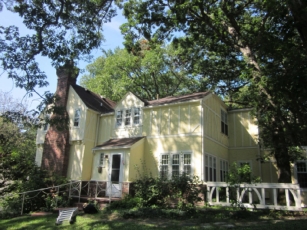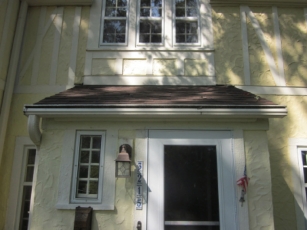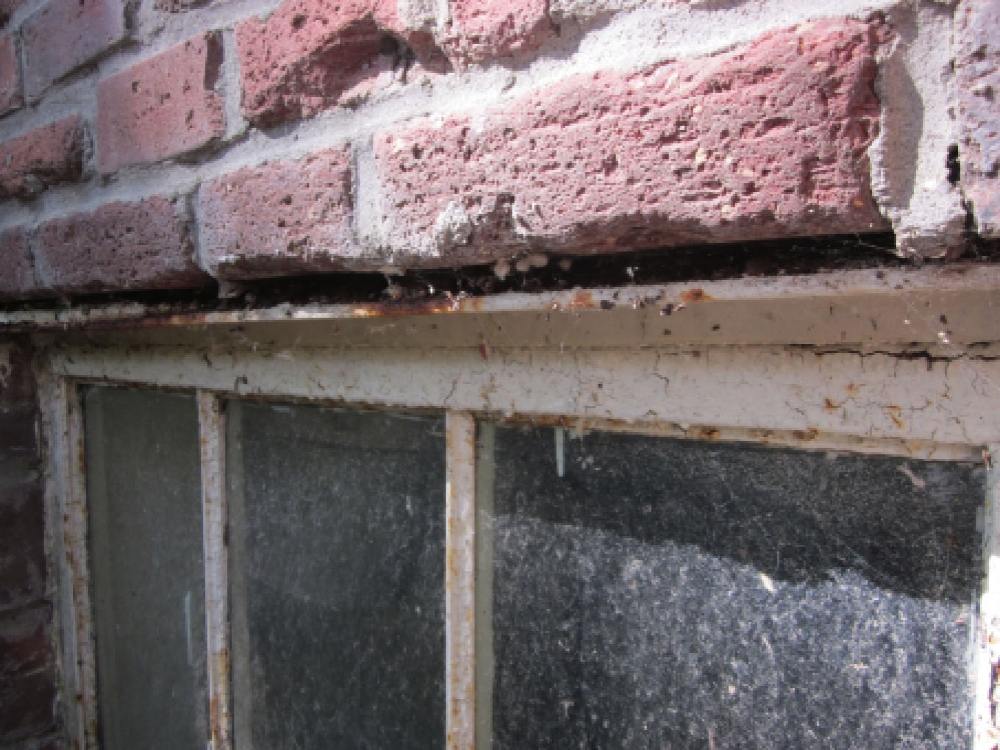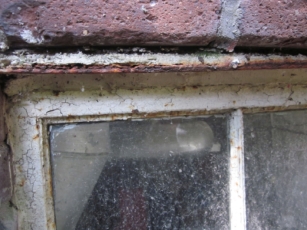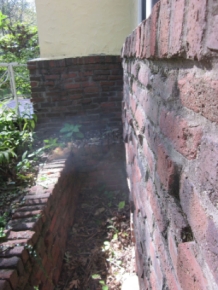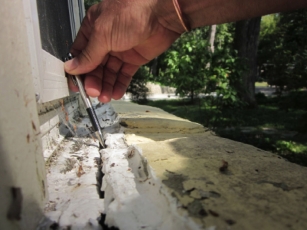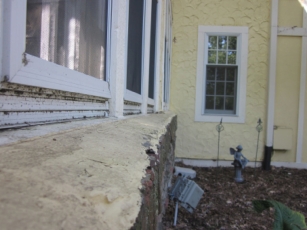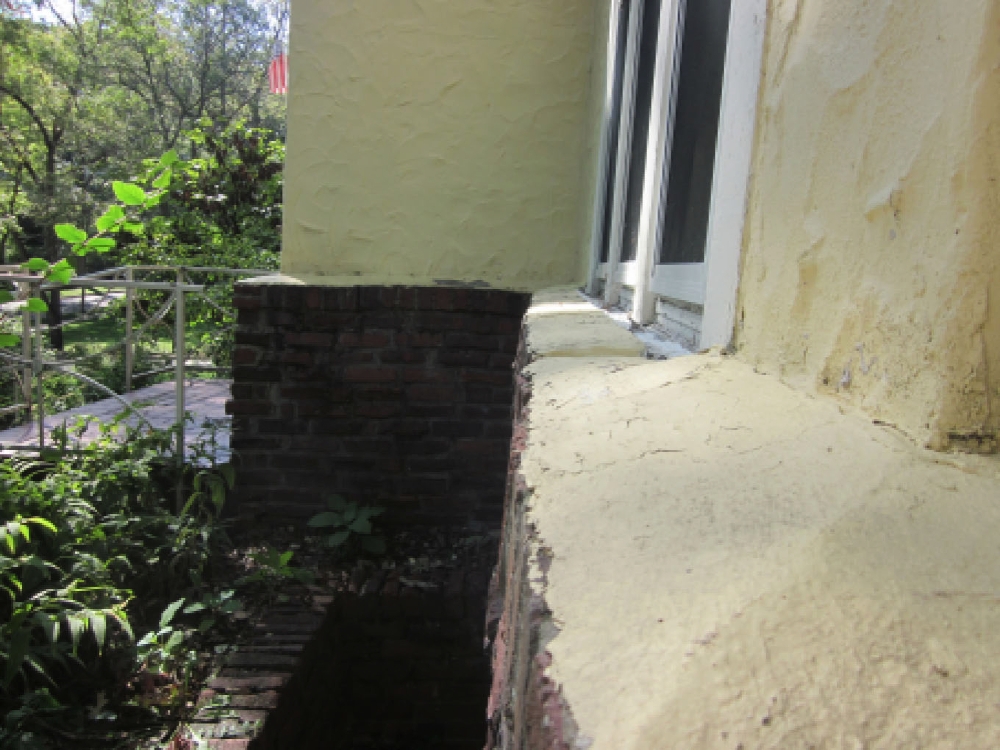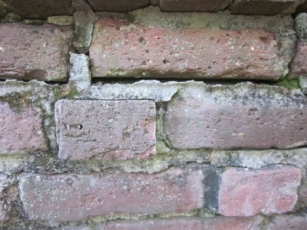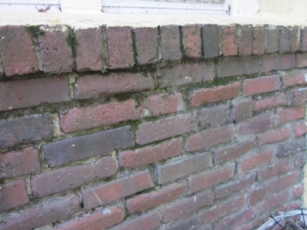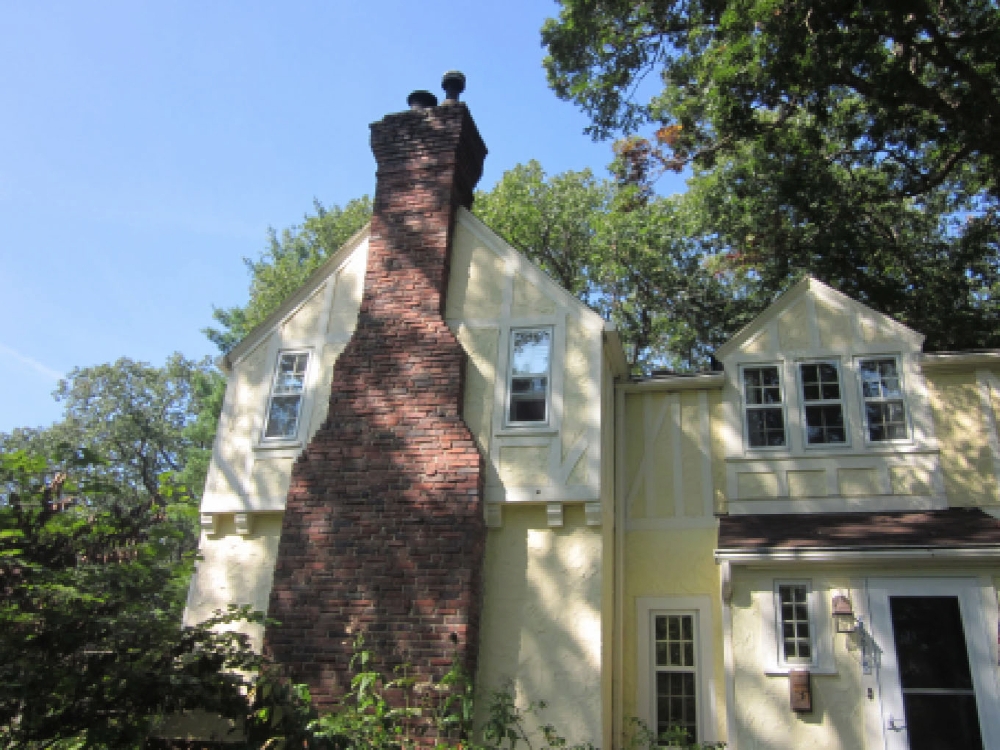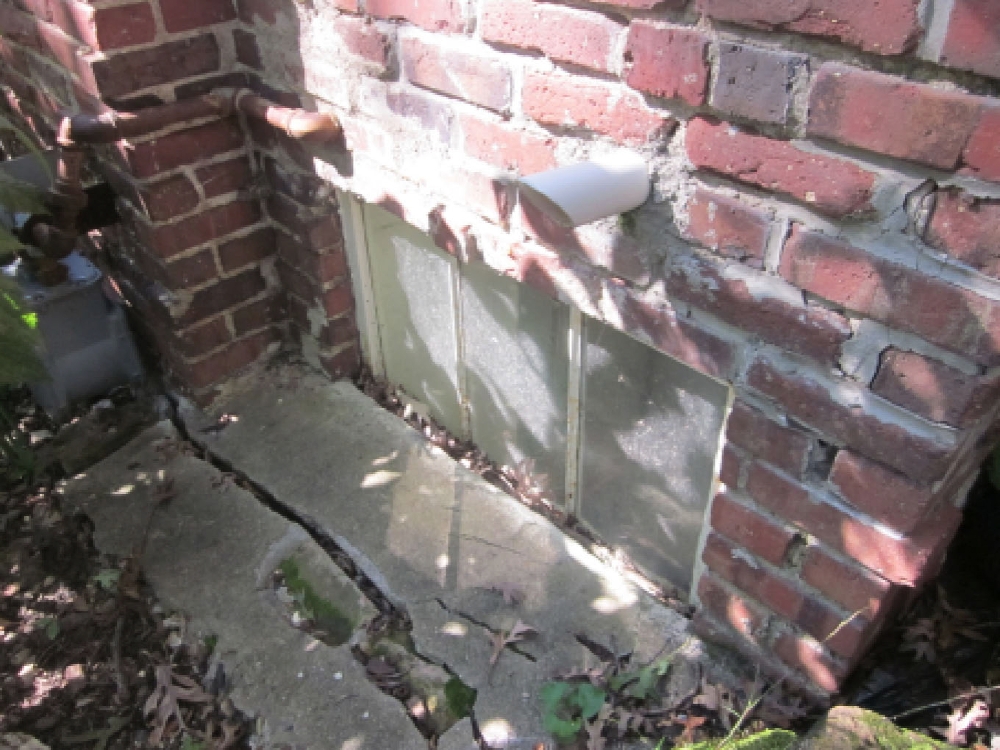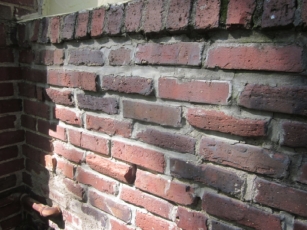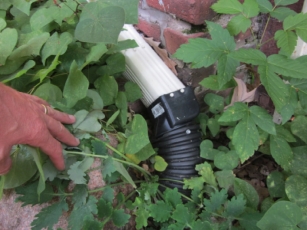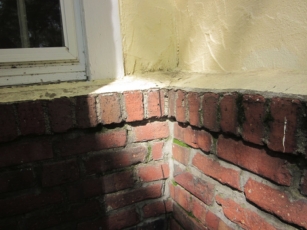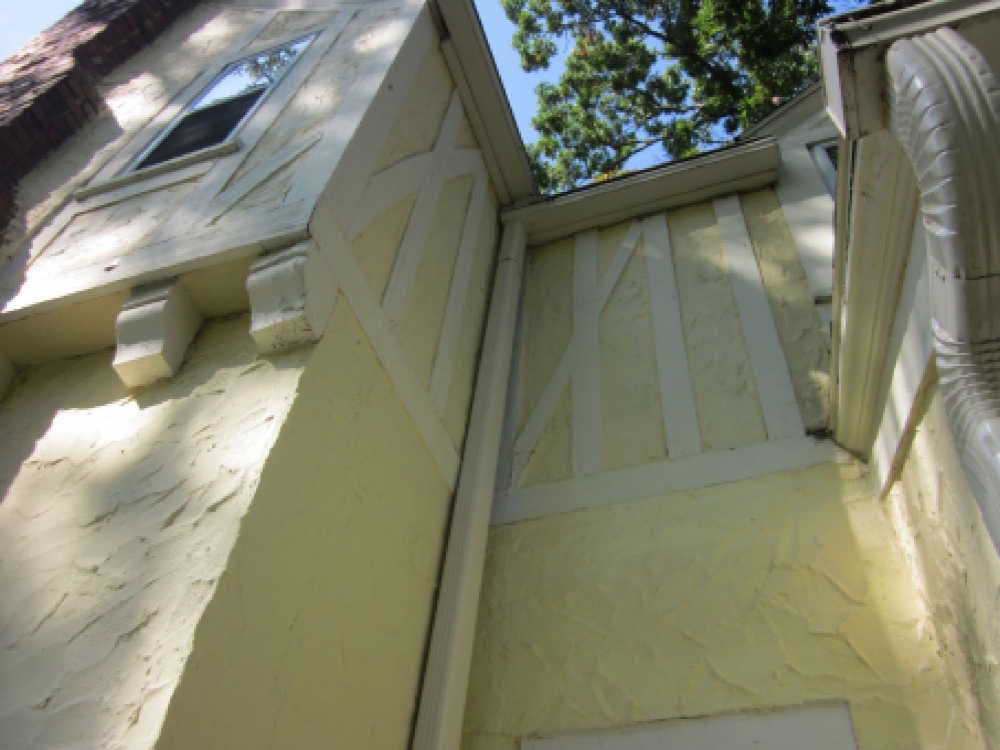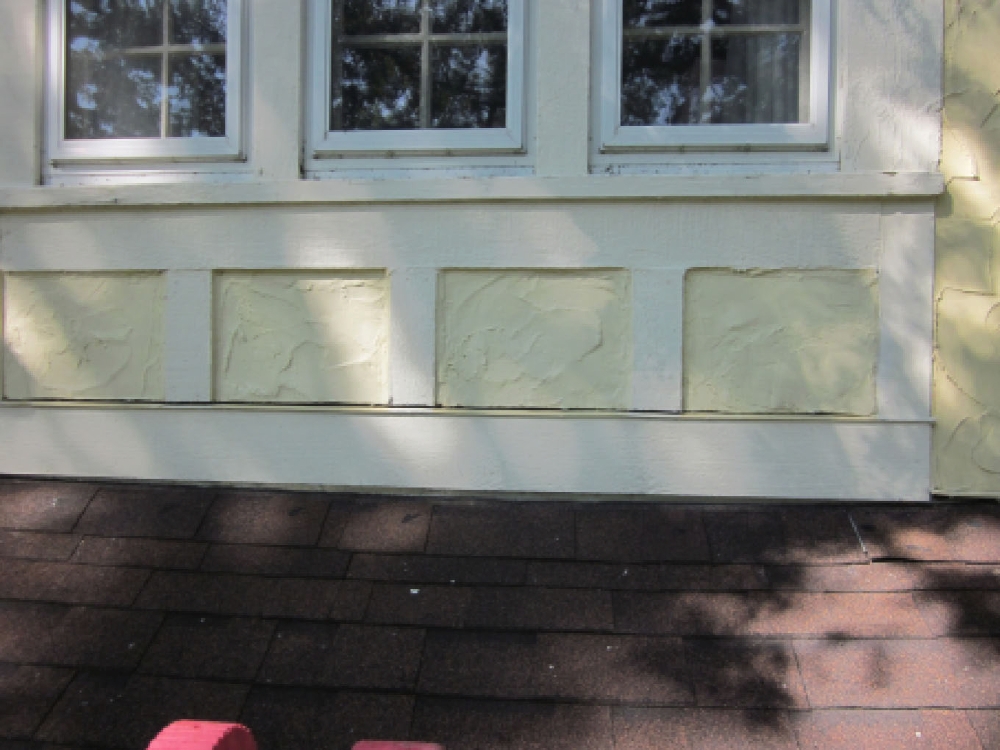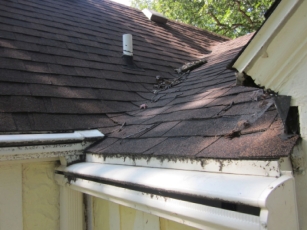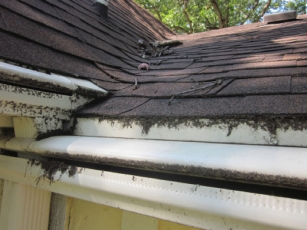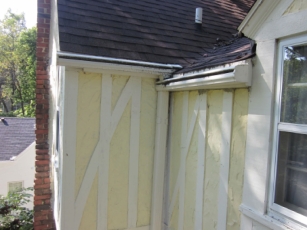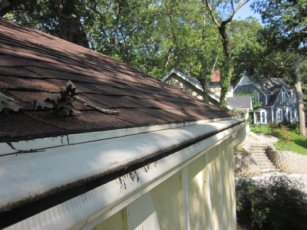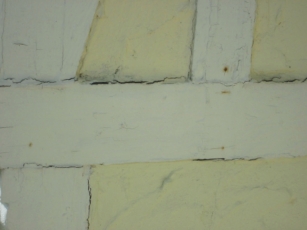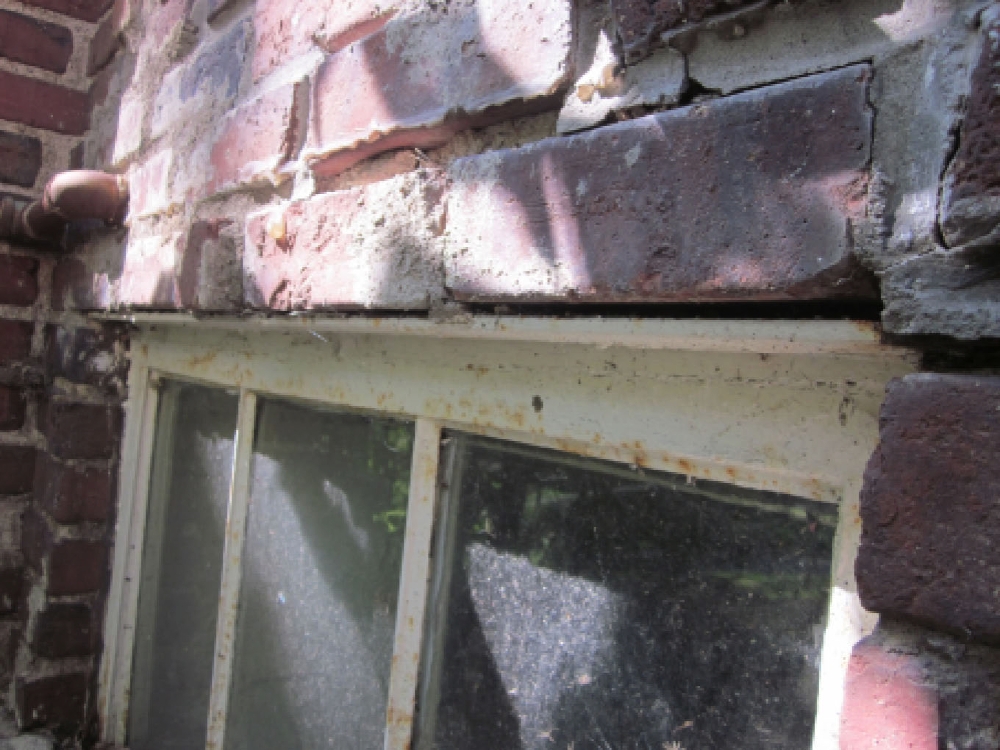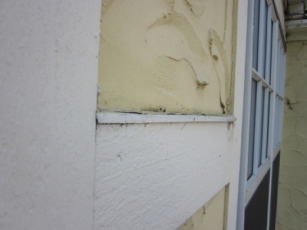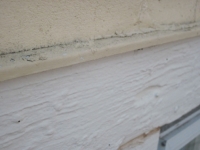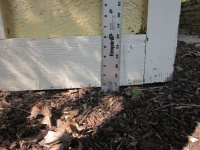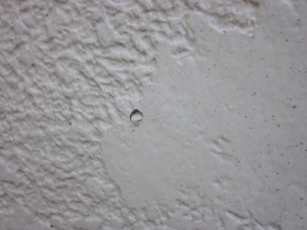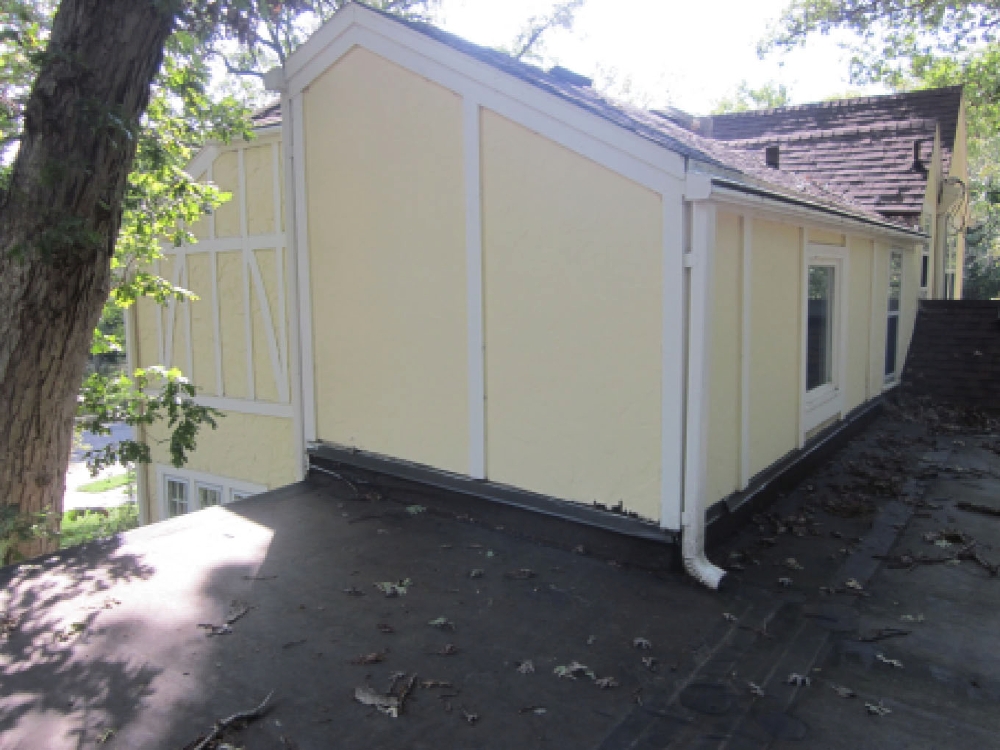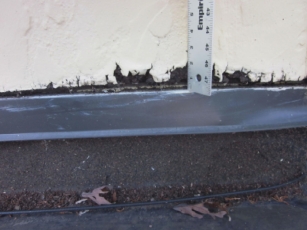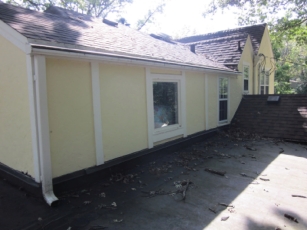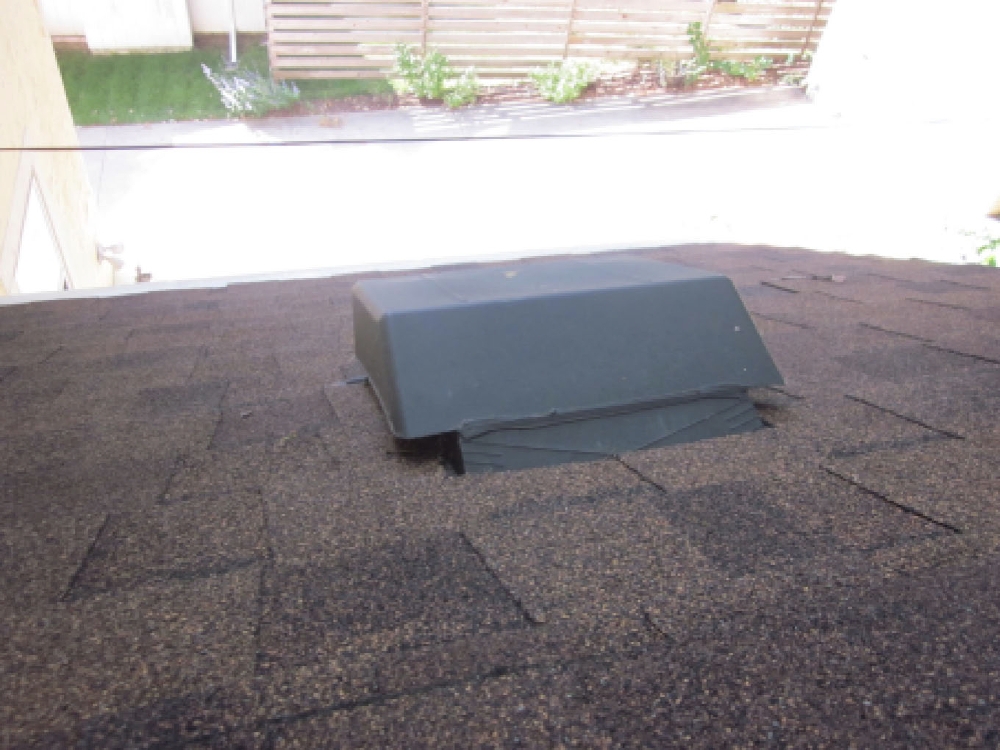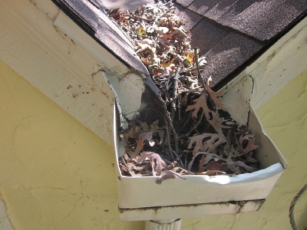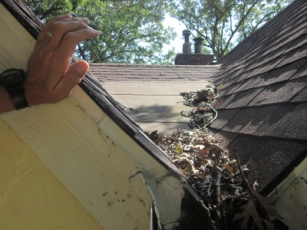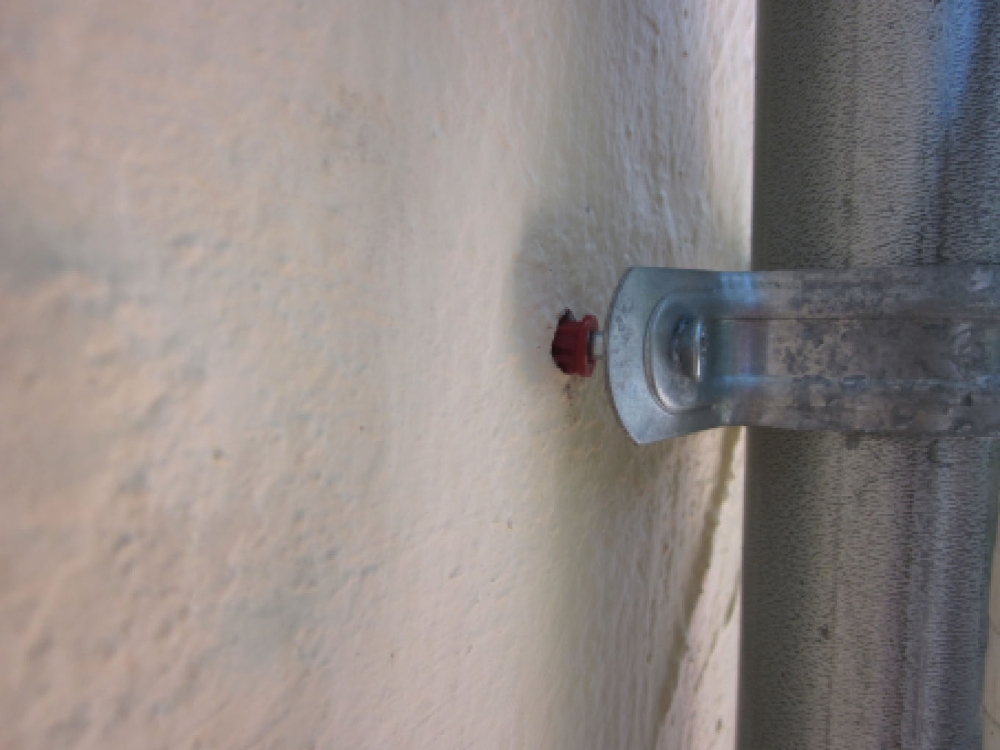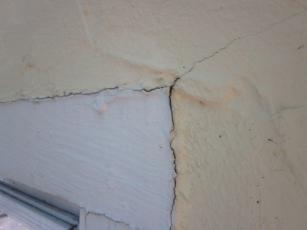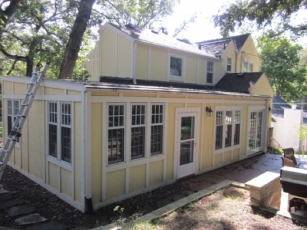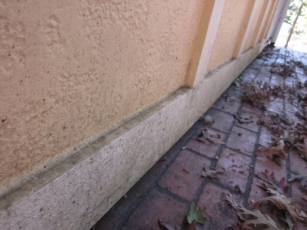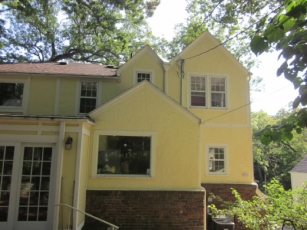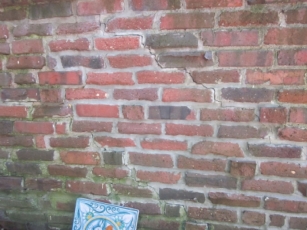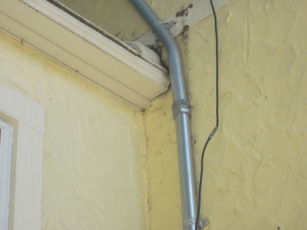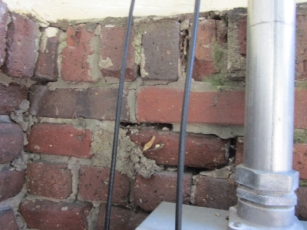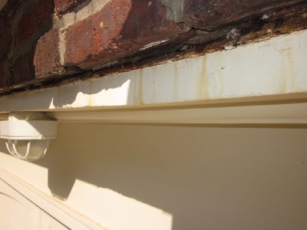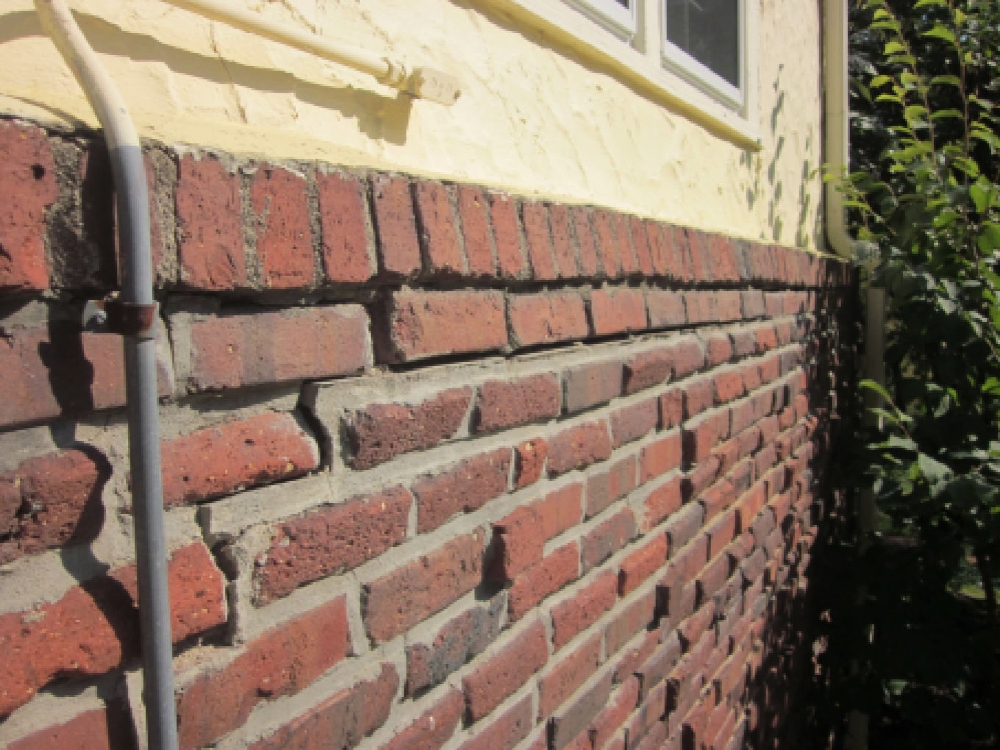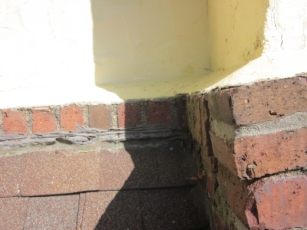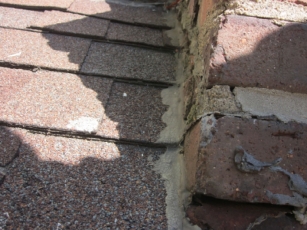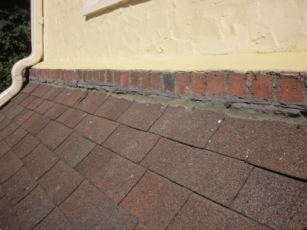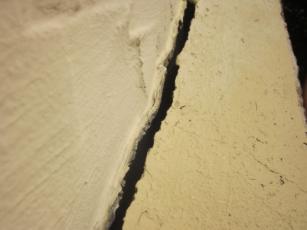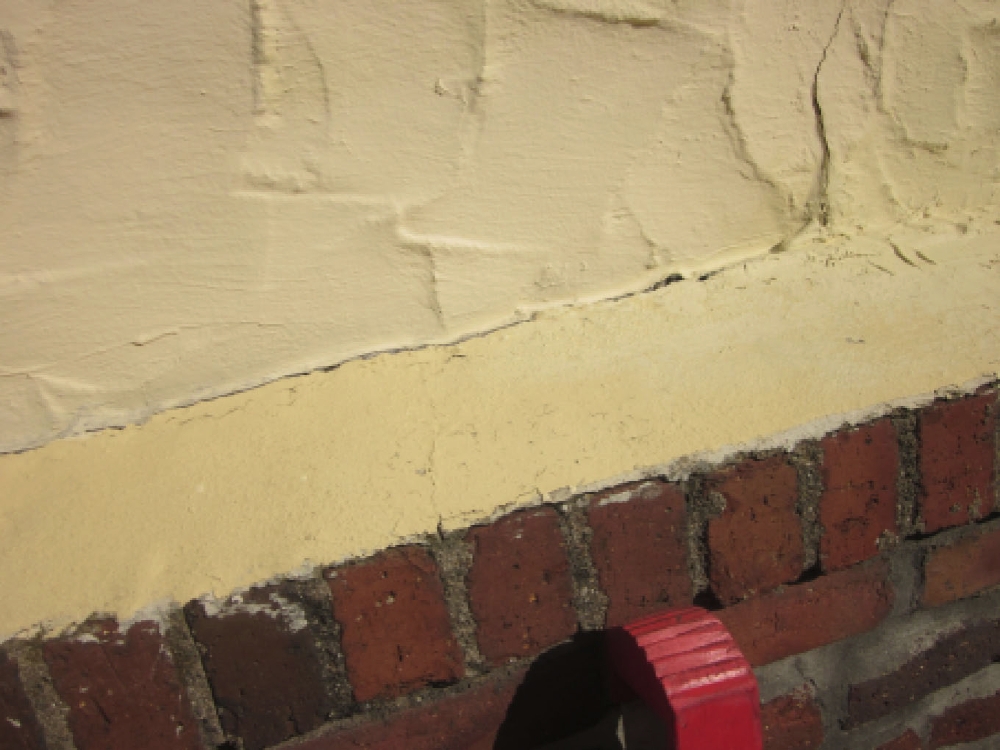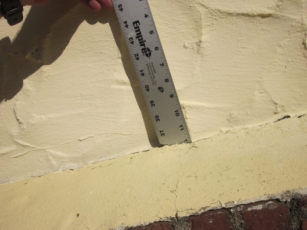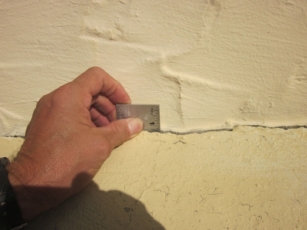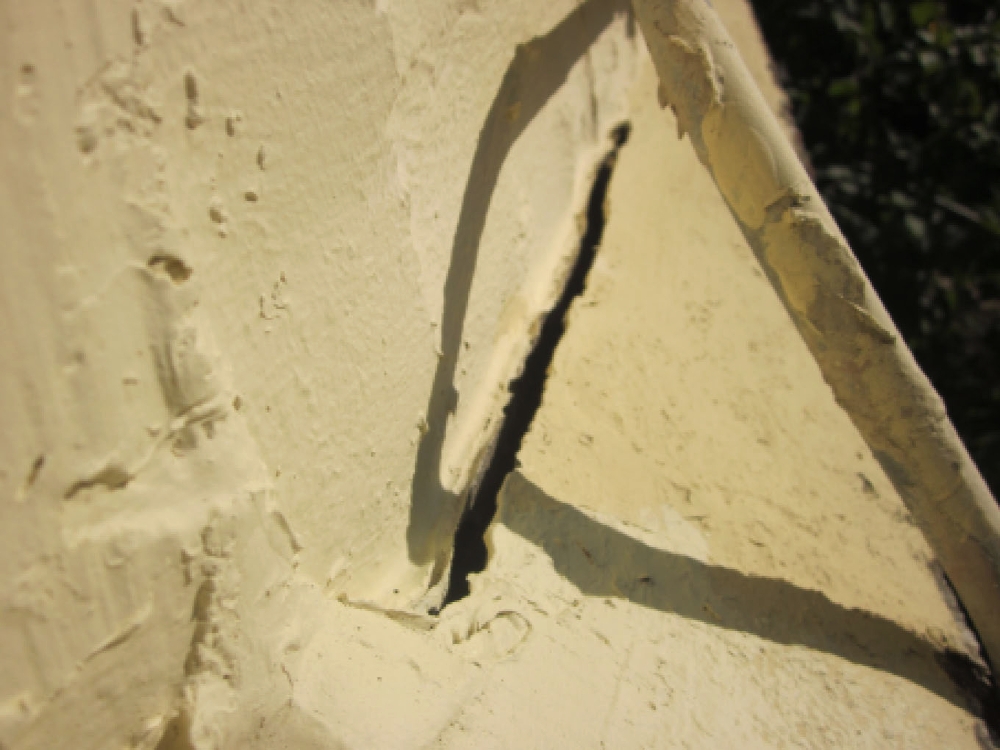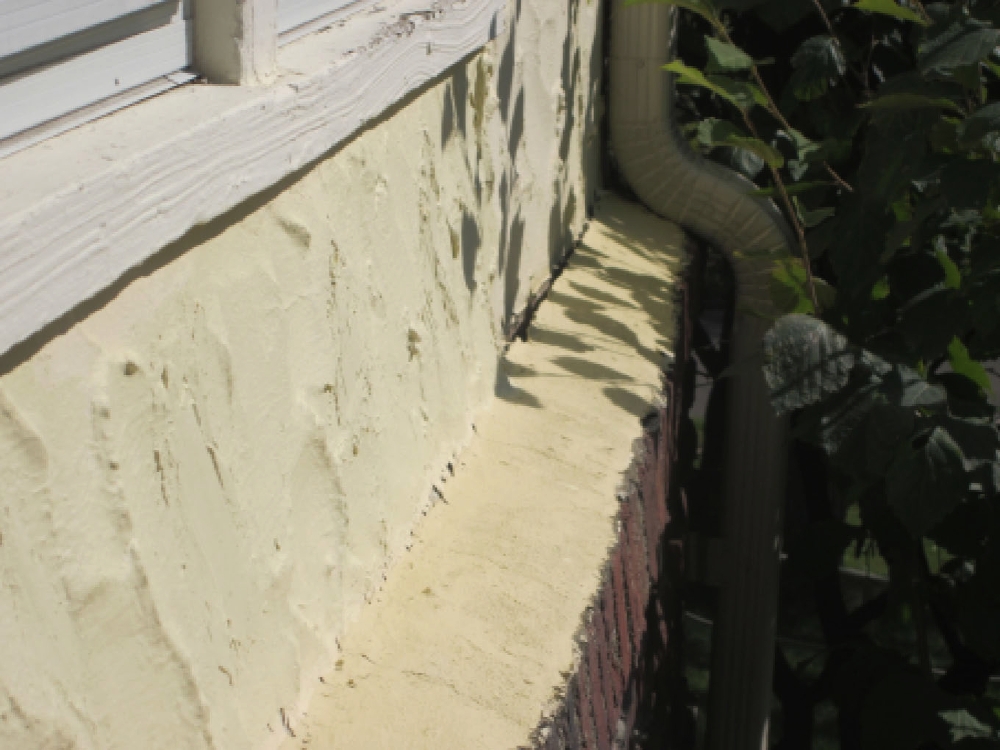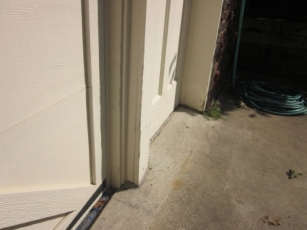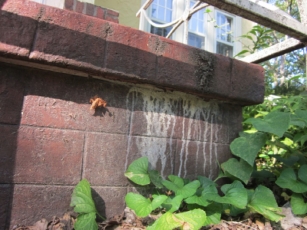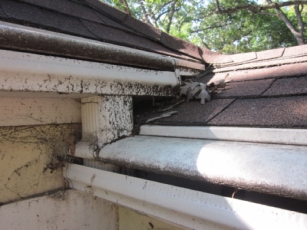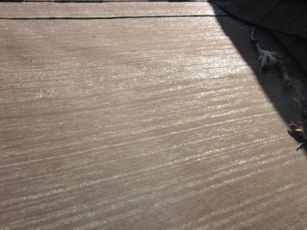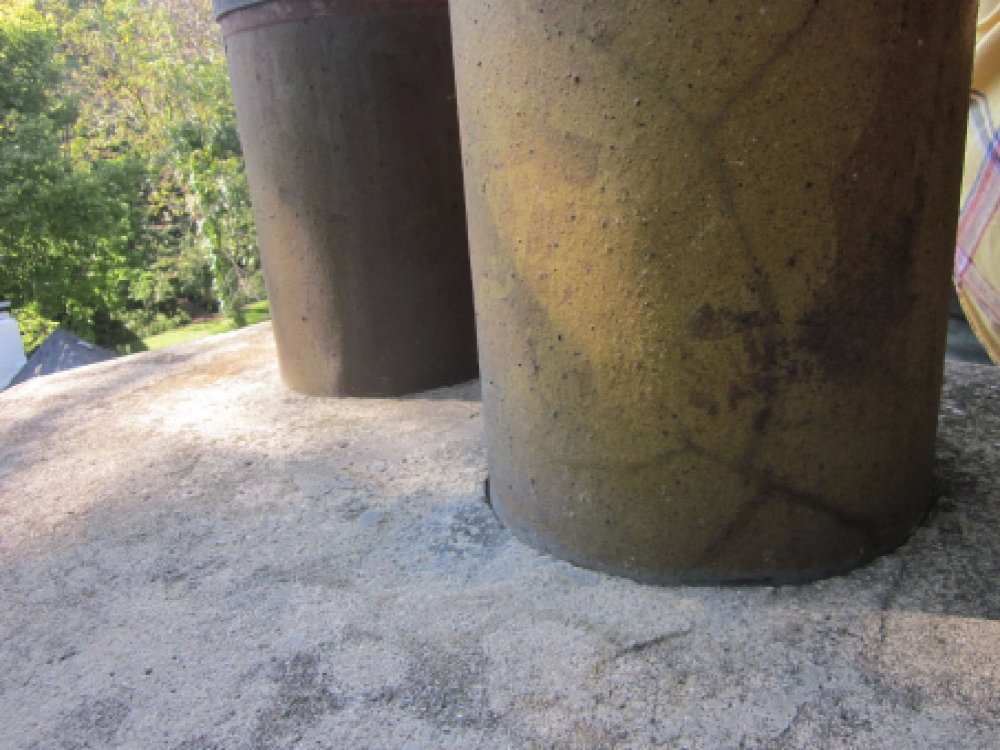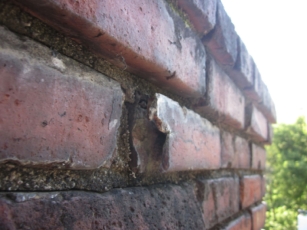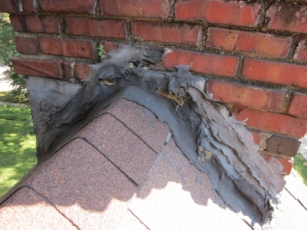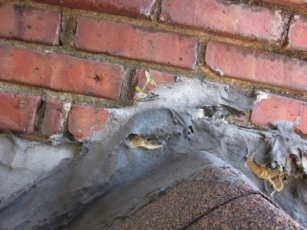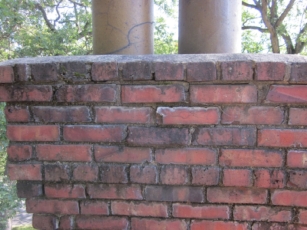Report #008
-
Home Value:
285,000
-
Damage Amount:
55,000
-
Damage Percent:
19.2%
-
Severity:
-
Damage Frequency:
-
Section 1: Summary
I reviewed the exterior of this home to discover points of possible moisture ingress into the building envelope. This is a summary of my findings and advice for corrections.
The exterior of the home is clad with a brick veneer and stucco. The addition is clad with a cement board siding that is intended to replicate a similarity to stucco by James
Hardie.
The brick veneer is a trim that extends up the wall, terminated with a row lock, then stucco up the rest of the wall. The finishing brick at the top of the wall has a mortar wash cap that was apparently used to create a transition from brick to stucco. This mortar wassh provides no drip detail so moisture runs down the wall over the cap and down the face of the brick. I often see this type of detail on homes this age. This has historically proven to be a less than effective detail to protect this brick and usually contributes to mortar degrading at a faster rate than if it had a limestone sill with a drip detail.
The joint where the brick meets the vertical wall surface is open in quite a bit of the front wall and the west side wall. This allows bulk water to flow behind the brick and into the wall surfaces that the brick is covering. Evidence of this moisture is showing up on the inside of the basement on the front side of the home. The mold problem on the face of the brick that has been identified by A Mold Detective and commented on by Dave from PuroClean will be tough to control unless this brick detail is corrected. The brick at the front of the home right of the entry over the window well is loose and could be pulled off with not much effort.
The lintels on the home are very rusted and some are very heavily into plate rust. The brick has been re-pointed in some areas but this is more a surface band-aid than effective maintenance. There are rust lines flowing over the head trims at the garage door indicating moisture getting behind the brick in the assembly above. The fire place chase has brick that is surface spalling, a condition caused by saturation of moisture then freezing and repeated over time. The chase cap is also a mortar wash style cap that is degraded and in need of correction. Going forward, all of the brick is in need of major correction; it might be more cost effective to replace it all due to the level of maintenance required.
The stucco on the east side of the home that has been replaced needs to be reviewed for general maintenance. There are areas that moisture could have access. Careful consideration needs to be given to the overall performance of this system before just sealing these defects. Some of these areas act as release points for incidental moisture that intrudes into the system. This is a barrier system, not a water managed system so it is of value to look at the whole assembly rather than looking at one area in isolation. I do have a very good stucco contractor that has worked on other projects I have consulted on. The addition is sided with a fiber cement board material with vertical and horizontal wood composite trims. The horizontal trims are required to be protected by a flashing. This is a code requirement; code requirements are generally the minimal standard. The siding on this addition is too close to grade which has the potential to cause premature failure of the siding and trim products used to clad this structure.
The collector head at the roof on the rear of the home where the low slope roof runs the water is filled with leaves and debris. This is a necessity to keep clear and free flowing in order to effectively manage the water in this area. I suggest servicing at least two times per year. The electric mast was mounted into the stucco with a plastic expanding anchor. This is not a correct detail as it can pull a section of the stucco off of the wall as it pulls free. The fastener needs to go deeper and install into framing behind the stucco and be imbedded in a sealant.
There are flashing details at the roof that rely in a bunch of gobbed on black jack. There are intrusion points on this sealant that may be allowing moisture intrusion into the building envelope. Black jack and the like are often used in lieu of good flashing and better sealant details for the expediency of the job. All of these areas need to be addressed and corrected appropriately. There is a crawl space that should be opened and reviewed further. I snapped a picture at my visit and it reveals exposed fiberglass insulation batts that are loose and laying on the dirt. The following pages are captioned pictures to give clarity to the problems I am seeing on this home. The pictures of the crawl space are included on the last page without comment.

Section 2: Foundation
Front elevation.
Front door.
Front window well: moisture is migrating behind brick facade at top. This is a big source of the moisture intruding into the basement in this area.
Brick lintel is into plate rust indicating heavy exposure to moisture over time.
Brick lintel is into plate rust indicating heavy exposure to moisture over time.
Open cracks in top allow bulk water entry into brick assembly.
This is open and allowing bulk water to flow behind the brick and into the building envelope.
This cap is a mortar wash style cap on the brick. This style has historically been deficient in protecting the brick.
This is open and allowing bulk water to flow behind the brick and into the building envelope. Evidence of moisture intrusion in the basement from this gap in the brick.
Front.
A lot of this damage can be attributed to the design of the cap at the top of the brick assembly. This cap allows water to run down the face of the brick saturating the mortar. Over time the freeze/ thaw breaks down the mortar and allows moisture to migrate into the system increasing the damage potential.
East side view, this detail allows the moisture to run off and not collect. There are problems with this design also as the water runs down the face of the brick
Section 3: East Side
East elevation.
Cracks in mortar will allow moisture to migrate into the wall system.
East of the FP chase south face.
Re-pointing the brick did not address the root cause of this problem.
Section 4: Moisture Intrusion
99.9% in scan mode; should be verified with a probe test. The joint of the stucco/brick interface is cracked due to two different rates of expansion. An expansion joint needs to be considered at time of repair and reconstruction.
This area handles a lot of runoff water and may be considered for modification . This could be a component in the wetting of the wall below.
This is a poor flashing detail and relies on the sealant being in perfect condition to keep moisture out of the building envelope. I suggest modification of this detail.
Cracks in the stucco at the wood trims need to be reviewed.
Window to the right of FP chase Mortar above in poor condition.
This is the newer stucco work; there are areas that need some maintenance.
This single joint can be very problematic to this system unless handled correctly at time of maintenance; you just can’t simply seal it up as it could trap incidental moisture from above in the system.
This trim is lacking the metal drip cap required to protect protruding wood trims. Over time the trim material will degrade prematurely.
This trim is lacking the metal drip cap required to protect protruding wood trims.
Too close to grade. None of the trims on the addition have the metal flashing that is required to protect them. This is a code requirement.
Clipped head nails are specifically denied by this product manufacturer; all nails that pierce the surface are to be sealed. Corroding nails are evidence to wrong nail selection for exterior use.
Section 5: Windows and Roof
This space is 1/8″ This window manufacturer requires a 3/8″ space to be filled with a backer rod and sealant.
Rotting siding. This is due to a combination of moisture exposure and not properly finishing the bottom edge of the siding.
The sealant at the top of this counter-flashing is a maintenance item that needs an annual inspection.
The plastic roof vents need to be inspected periodically; they do have a history of cracking. I suggest a metal vent by Lomanco.
This collector head needs cleaned at least twice a year.
Electric mast is in need of a better mounting system. An expansion anchor into the stucco is not a best practice detail.
Window sill is in need of refinishing. This paint release is more than likely due to moisture migrating into this sill at an unprotected area.
Cracks in the stucco need to be reviewed for repair.
This trim need a flashing protection.
Section 6: Brick
Mortar wash cap does not provide adequate protection fro the brick.
Trim at kitchen window is rotting and in need of replacement.
This area appears to be getting wet and needs to be reviewed.
This cap that was intended to protect this brick is actually contributing to the system failure. Mortar at this area is in very poor condition.
Lintel in plate rust.
This 5/16″ lintel has grown to 1/2″ in plate rust. This disturbs the mortar joints and cracks the system apart.
Rust stains show the level of moisture intrusion into the system.
This ledge is on the west side of the home and has the same cracks as the front brick assembly.
This is the joint at the house and the brick. This allows bulk water to flow into the brick assembly.
Section 7: West Side
This is the joint at the house and the brick. This allows bulk water to flow into the brick assembly.
West side of home: voids admit bulk water into the brick assembly.
West side of home: voids admit bulk water into the brick assembly.
Garage door jambs not isolated from the concrete will wick moisture.
Efflorescence on face of masonry shows water leaks in concrete stoop cap.
Section 8: Other Notes on the Roof
Collector head needs cleaned.
A mortar wash cap is rated the worst at protecting brick. This is evident in the cracks in the mortar.
No sealant joint at clay flues.
Brick spall; this is due to moisture freeze damage over time.
There is defects in this sealant everywhere. This style of sealant application is ineffective against moisture intrusion at the brick.
This entire chase needs repair and reconstruction.
MAT(masonry absorption test): Highly absorptive.


